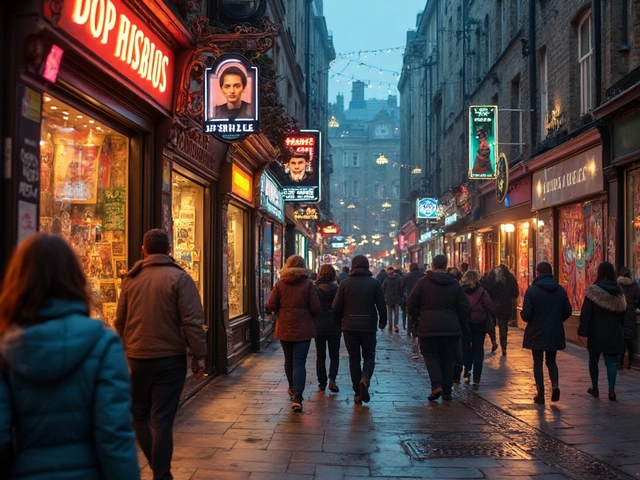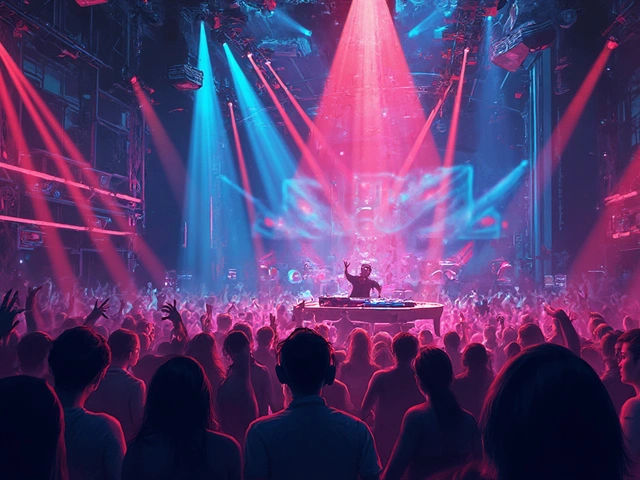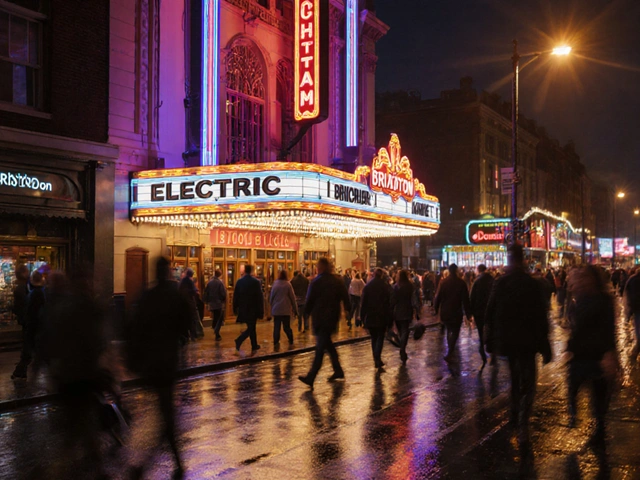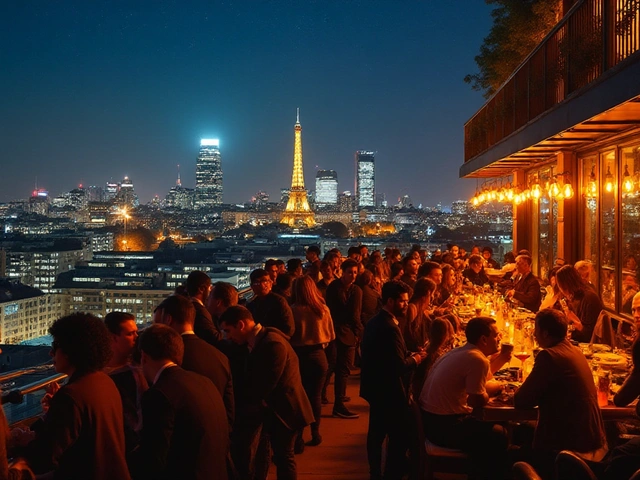In London, where the pulse of the city never truly sleeps, few venues capture the raw energy of underground electronic music like Fabric. Nestled in the heart of Farringdon, just a five-minute walk from Farringdon Station and a stone’s throw from the Barbican, Fabric isn’t just another club-it’s a cultural landmark that’s shaped London’s nightlife for over two decades. Open since 1999, it’s the place where DJs from Berghain to Brooklyn come to test new tracks, where凌晨2am crowds still spill onto Charterhouse Street, and where the bass doesn’t just shake the walls-it shakes your chest.
What Makes Fabric Different in London’s Nightlife Scene?
London has no shortage of clubs. There’s Printworks, now closed but still whispered about in reverent tones. There’s XOYO in Shoreditch, where indie bands and synth-pop nights draw crowds. There’s The Cross in Camden, still holding down the post-punk legacy. But Fabric? It’s different. It’s not about VIP tables or bottle service. It’s not about looking cool under strobe lights-it’s about the sound. The club’s legendary 10,000-watt sound system, designed by the same team behind Berlin’s Berghain, is calibrated to deliver frequencies you feel in your teeth. People come here to hear music the way it was meant to be heard: loud, deep, and unfiltered.
Unlike clubs in Soho that cater to tourists with themed nights and £15 gin and tonics, Fabric runs three distinct rooms-Room 1, Room 2, and the intimate Room 3-each with its own sonic identity. Room 1 is for techno purists: minimal, hypnotic, relentless. Room 2 leans into house, garage, and bass-heavy UK sounds like UK funky and grime. Room 3? That’s where the outliers go-experimental noise, ambient sets, and late-night vinyl-only sessions that start after 3am.
The Sound System That Changed London
Fabric’s sound system isn’t just powerful-it’s precise. Each speaker is positioned to eliminate dead zones. The subwoofers are tuned to 20Hz, the lowest frequency the human ear can detect. This isn’t marketing fluff. It’s why DJs like Jeff Mills, Nina Kraviz, and Peggy Gou have said in interviews that Fabric is the only club in the UK where they feel they can play their full sets without compromise. The system was installed by Tony Andrews, a former engineer for the Royal Opera House, who spent two years designing it to handle the physical stress of 2,000 people dancing for 12 hours straight.
There’s no mistaking the moment you walk in. The air thickens. Your ribs vibrate before you even reach the bar. The club doesn’t rely on flashy visuals or neon signs. The lighting is functional-dim, focused, intentional. The walls are bare brick. The floor is concrete. There’s no ceiling above Room 1-just exposed steel beams and ductwork. It looks like a warehouse. It feels like a temple.
Who Goes to Fabric? London’s Real Nightlife Crowd
Fabric doesn’t attract the same crowd as a club in Mayfair. You won’t see hedge fund managers in tailored suits here. You’ll see a 22-year-old art student from Peckham who came on the 78 bus from Brixton. A 35-year-old sound engineer from Hackney who’s been coming since 2003. A visiting DJ from Tokyo who booked a flight just to play a 3am set. The dress code? Whatever you’re comfortable in. Jeans. Boots. Hoodies. Dresses. No one cares. The only rule: no bags larger than a small backpack. No cameras. No phones raised above shoulder height. This isn’t about posting-it’s about being present.
The crowd is diverse, but not in the performative way you see on Instagram. It’s diverse because the music is. You’ll hear techno one night, jungle the next, then a 6-hour ambient set curated by a local producer from Deptford. It’s not about trends. It’s about depth. And that’s why, despite the 2016 closure threat over licensing issues, the community rallied. Over 150,000 people signed the petition. Musicians from Aphex Twin to Four Tet wrote open letters. The Mayor of London himself publicly backed the club. Fabric reopened in 2017 with a new license-and a stronger sense of purpose.

How to Get In (And What to Expect)
Fabric doesn’t sell tickets at the door. You need to plan. The club operates on a strict schedule: Friday and Saturday nights, with occasional Wednesday and Thursday events. Tickets go live on the website every Tuesday at 10am. They sell out within minutes. Set a reminder. Use a desktop browser-not your phone. The site is basic, no frills. That’s intentional.
Entry is £15 on weekdays, £20 on weekends. Cash isn’t accepted. You’ll need a card. The bar runs on a token system: £5 for a pint of London Pride, £7 for a gin and tonic with Fever-Tree tonic. No cocktails with edible flowers or champagne towers. Just good beer. Just good spirits. The queue forms outside on Charterhouse Street, often starting at 10pm. It moves fast. Staff are polite but firm. No one gets in without ID. No exceptions. This isn’t about exclusivity-it’s about safety.
Once you’re inside, you’re on your own. There’s no host to guide you. No hostess to seat you. Just music, sweat, and the occasional flash of a smile in the dark. The toilets? Clean, but no frills. The exits? Well-marked, with emergency lighting. The club has a medical team on-site every night. They’ve seen it all-from overheating to panic attacks. They know how to handle it.
Why Fabric Still Matters in 2025
In a city where chain pubs are replacing independent bars and corporate promoters are turning every basement into a ‘vibe’-themed experience, Fabric stands as a quiet rebellion. It doesn’t chase algorithms. It doesn’t partner with energy drinks. It doesn’t hire influencers to post selfies. It just plays music-and lets the people decide what it means.
It’s the same club where the first UK dubstep sets were played in the early 2000s. Where the early days of UK garage were nurtured. Where the first live sets from Four Tet and Floating Points were recorded. It’s not just a venue. It’s a living archive of British electronic music. And it’s still growing. In 2024, Fabric launched its own label, Fabric Records, releasing tracks from local producers in East London, Southwark, and Croydon. One of their recent releases, ‘Brixton Pulse’ by artist Kofi Nkansah, was played on BBC Radio 1’s Essential Mix.
Fabric doesn’t need to be the biggest. It doesn’t need to be the loudest. It just needs to be honest. And in a city that’s changing faster than its Tube lines, that’s rare.
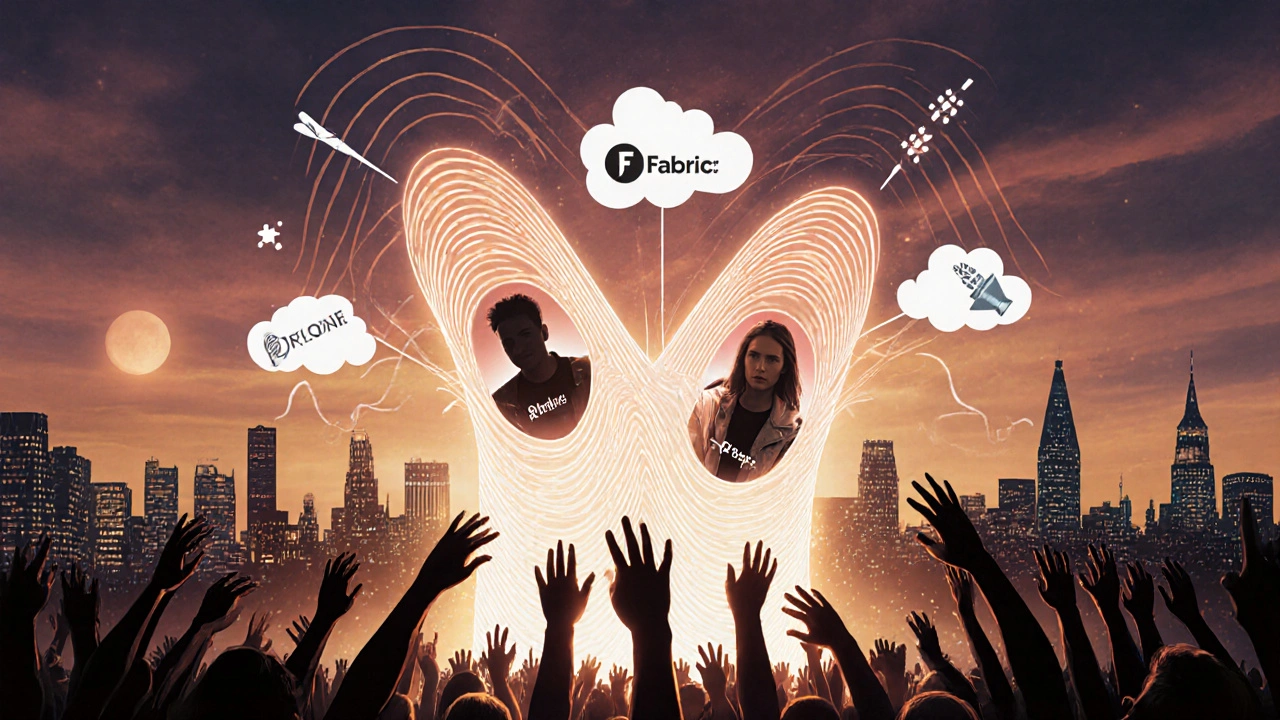
Where to Go After Fabric
If you’re still wired after 6am, you’ve got options. Walk five minutes to The Eagle in Farringdon for a strong black coffee and a bacon butty. Or head to The Coffee Shop on Charterhouse Street-they open at 5am and serve the best fry-up in the zone. If you’re feeling adventurous, the 24-hour Sainsbury’s on Clerkenwell Road is open, and you can grab a bottle of water, some crisps, and a £1.50 chocolate bar while you wait for the first Northern Line train.
And if you’re lucky? You might catch the 6:30am bus to King’s Cross, where a few regulars still gather to talk about the set they just heard. No one takes a photo. No one posts it. They just nod. And walk away.
Is Fabric still open in London in 2025?
Yes, Fabric is open and operating as of 2025. It reopened in 2017 after a temporary closure due to licensing concerns and has since maintained its license with strict safety and noise controls. Events run Friday and Saturday nights, with occasional midweek sessions. Always check the official website for the latest schedule.
What time does Fabric close?
Fabric closes at 5am sharp, Monday through Saturday. Sunday is a quiet day. The club operates under a strict licensing agreement that limits operating hours to prevent noise complaints in the residential areas of Farringdon. Last entry is typically at 2am, and doors close at 3am for safety checks. Don’t be late.
Do I need to dress up to go to Fabric?
No. Fabric has no dress code. People wear hoodies, jeans, trainers, dresses, or even work clothes straight from the office. What matters is that you’re respectful. No masks, no large bags, no cameras. The focus is on the music, not your outfit. Trying to look ‘cool’ here will make you stand out for the wrong reasons.
Can I buy tickets at the door?
No. Fabric does not sell tickets at the door. All tickets must be purchased online through their official website. Events sell out fast-often within minutes of going live on Tuesday mornings. There are no exceptions. Avoid third-party sellers; they often charge inflated prices or sell fake tickets.
Is Fabric safe for solo visitors?
Yes. Fabric is widely regarded as one of the safest clubs in London. It has a zero-tolerance policy for harassment, and staff are trained to intervene immediately. There’s a dedicated medical team on-site every night, and exits are clearly marked. Many people-locals, tourists, and solo visitors-come alone. The atmosphere is focused on the music, not social competition.
What’s the best way to get to Fabric from central London?
The easiest way is the Tube: take the Circle, Hammersmith & City, or Metropolitan line to Farringdon Station. Exit onto Farringdon Street, turn left, and walk 300 meters. You’ll see the club’s plain black facade. If you’re coming from the South Bank or Waterloo, the 63 bus drops you right outside. Avoid driving-parking is nearly impossible, and the area is covered by the ULEZ charge.
What Comes Next for Fabric?
Fabric isn’t resting. In 2025, it’s expanding its community outreach. The club runs free listening sessions for local schools in Islington and Hackney, teaching kids about sound engineering and music production. It’s partnered with the London Music Fund to provide instruments to underfunded youth programs. And it’s quietly testing a new digital archive-uploading live recordings from past nights, accessible only to ticket holders.
It’s not about fame. It’s not about growth. It’s about staying true. In a city where everything changes, Fabric remains. And for those who’ve felt the bass in their bones, that’s enough.




